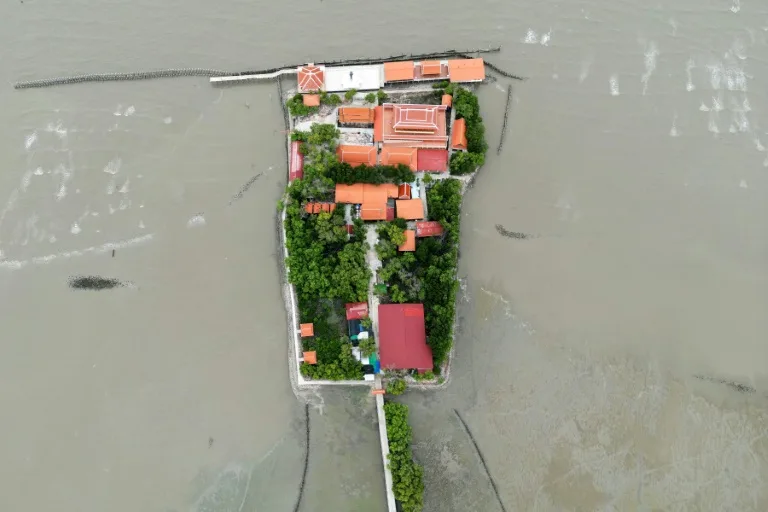A school in Thailand resists the advance of the sea
Every morning, four barefoot children proudly sing the national anthem as the Thai flag is raised in front of their school, a building on stilts surrounded by water.
They are the last pupils of Ban Khun Samut Chin, a coastal village less than 10 kilometers from Bangkok slowly engulfed by the ocean.
There are no more than 200 inhabitants left here, in a portent of what may happen to countless coastal communities around the world as climate change causes sea levels to rise.
“I had a lot of friends, 20 to 21 classmates when I entered kindergarten,” says Jiranan Chorsakul, 11.
“I feel a bit lonely and would like new students to enroll,” he adds.
Since the 1960s, the village has lost two kilometers of land to the sea, village chief Wisanu Kengsamut tells AFP.
The first victim of erosion was a Buddhist temple, now surrounded by water and accessible only by a long walkway.
“Behind me was the village and a mangrove swamp and you could easily walk from the village to this temple (…) The villagers started moving inland, further and further away from the temple,” he says.
The only visible remains of the place where the village used to be located are old electric poles sticking out of the water.
– “The village could disappear” –
An estimated 17% of Thailand’s population of around 11 million people live on the coast and depend on fishing or tourism.
Sea levels have already risen by 15 to 25 centimeters around the globe since 1900 and the rate of rise is accelerating, especially in tropical areas such as Southeast Asia, according to UN climate experts.
If the trend continues, the oceans could rise by almost a meter more around the Pacific islands and the Indian Ocean before the end of this century.
Ban Khun Samut Chin is a stark warning of what would be “a climate-ravaged world,” according to Danny Marks, professor of environmental policy at Dublin University.
“This is an obvious microcosm of the risk that sea level rise represents for us, particularly in developing countries,” he told AFP.
The municipality’s erosion is also due to environmental mismanagement.
Its groundwater was overexploited and the thick mangroves, which served as natural protection, were destroyed to make way for shrimp farms.
Dams on the Chao Phraya River, which crosses Bangkok and flows near the village, have slowed sediment deposition in the bay.
To try to cope with the situation, bamboo and concrete pillars were installed and initiatives were launched to reconstitute the maritime forest.
But in the long term, “these measures may not be enough to withstand the force of nature and the village could disappear,” warns Wisanu.
– The hope for ecotourism –
“We are not considering moving further inland because there is no more land available,” he says.
Appeals to the government for help have not borne fruit, he laments.
“We have to save ourselves.”
The village is committed to ecotourism and offers homestays to try to raise awareness of the situation among its guests.
The school’s students also study ecology with their teachers and learn to identify plants and animals.
In the future, they may become tour guides, says headmistress Mayuree Khonjan.
In his classroom equipped with four small chairs and pink desks, Jiranan is concentrating on the figures his teacher writes on the blackboard.
“I want to become a teacher so I can pass on my knowledge to other students. I want to teach at this school, if it still exists,” he explains.
But next year, one of his classmates will move on to secondary education and only three students will be left to sing the national anthem every morning in this water-haunted school.

